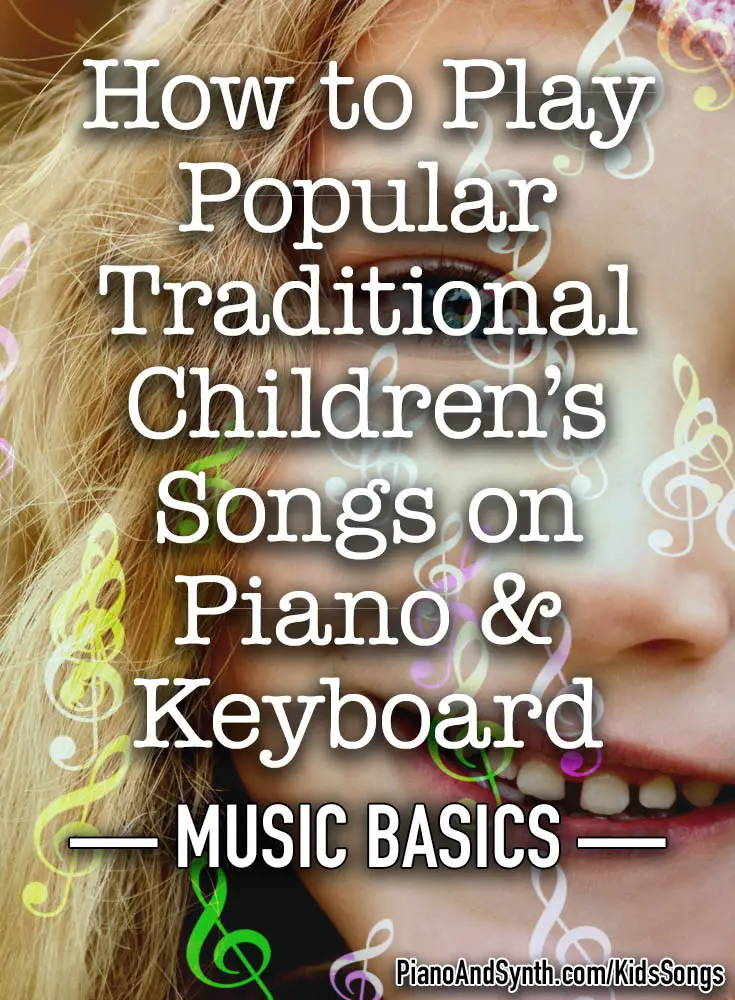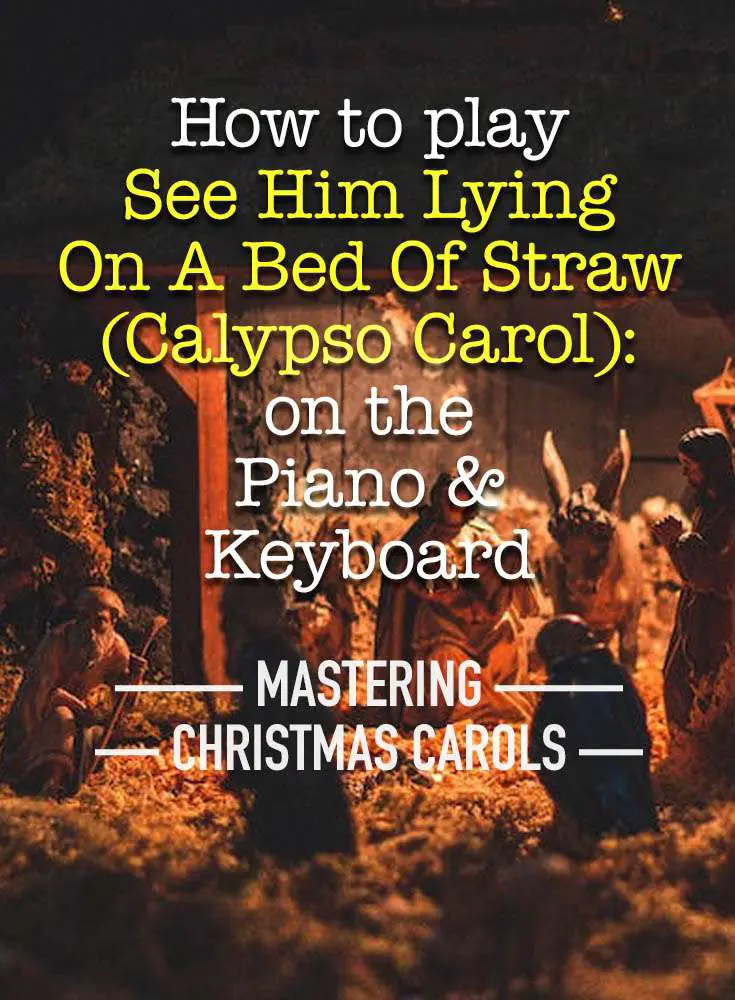
Would you like to be able to play some of the most famous and popular traditional children’s songs, or even teach your child to play them?
If so, take a look at our guide to playing a number of traditional nursery rhymes that have proved popular over the years.
We provide very basic sheet music for each song, complete with the melody line, a simple bass line accompaniment, and basic fingering recommendations.
If you’d like any more help, or wish to request another song for us to cover, please leave a comment at the bottom of this page.
Take your child’s musical adventure further by looking at our selection of children’s music books – in particular check out The Big Book of Nursery Rhymes & Children’s Songs (Amazon US/Amazon UK) and Very Easy Piano Tunes (Amazon US/Amazon UK) Also take a look at Buying a Child’s First Electronic Keyboard Instrument and How to teach young children to play music keyboard using coloured stickers.
Click on any song in the list below to jump to that part of the page, or just scroll down to see what’s on offer:
- 1, 2, 3, 4, 5. Once I Caught a Fish Alive
- Baa Baa Black Sheep
- Here We Go Round the Mulberry Bush
- Humpty Dumpty
- London Bridge is Falling Down
- Mary, Mary Quite Contrary
- Sing a Song of Sixpence
- Three Blind Mice
- Twinkle, Twinkle Little Star
1, 2, 3, 4, 5. Once I Caught a Fish Alive
The little notes in bars 5 and 7 are called grace notes. These are used when a note needs to be played/sung but it’s very short indeed and should come just before the main note. In this case, it’s on the word you in ‘why did you let it go’ and the ger of finger in “which finger did it bite?”.
Baa Baa Black Sheep
This is a fairly easy nursery rhyme to play. You might notice some similarities with Twinkle, Twinkle Little Star.
Here We Go Round the Mulberry Bush
6/8 (Six-eight) time simply means that there are six beats in each bar. You’ll notice two distinct halves to each bar, of three beats each. This is accentuated by the bass accompaniment.
Humpty Dumpty
Another song in 6/8 time. You might find the switch from finger 4 to thumb (1) between bars 5 and 6 a little odd to begin with – your hand might feel a bit like a crab walking up the keyboard particularly after the previous section in bar 5. Stick with this as it keeps the four-note scale from D to G in bar 6 smooth.
A similar principle applies at the end of bar 7. You need to switch from finger 5 on the C to finger 3, not 4, on the B, because otherwise you’d end up playing the lower F# in bar 8 with your thumb. As it is, you need to swing your index finger over your thumb as you move from the G to F#. If you transpose this piece into another key, you will find the sharps or flats, and hence the fingering, are different.
London Bridge is Falling Down
The pattern of notes at the beginning of bars 1 and 3 might look complicated, but you probably already know the timing of “London Bridge” anyway, so simply play the notes with the timing you know. There’s no need to count all those quavers (eighth notes) and semiquavers (sixteenth notes). Listen to the MIDI audio file if you get stuck.
This piece of music can be played with your right hand almost in the same position the whole time. Start on your ring finger (4). Your index finger (2) plays the F#. Hit the E with your thumb (1) at the start of bar 2 and then just walk up naturally. This way you’ll be back at your fourth finger for bar 3.
Mary, Mary Quite Contrary
Don’t be put off by how low the music seems to look in bar 3. Work out what those notes are ahead of time so you don’t get stuck counting having to count the ledger lines. That note at the end of bar 2 is the G below middle C, and that four note ascending scale (G, A, B, C) repeats twice before hitting the F at the end of bar 3 with your little finger (5).
Sing a Song of Sixpence
There are a few slightly longer stretches and finger changes to enable you to play this song more smoothly. In particular, the stretch from the C to lower E at the end of bar 3, and the switch from your little finger (5) to ring finger (4) at the end of bar 6. Also watch the change from your index finger (2) to ring finger (4) in the middle of bar 7.
Three Blind Mice
Don’t be put off by the 12/8 time signature. This means 12 beats in a bar. It could have been written in 6/8 with twice as many measures, but I think it looks better this way.
See how your middle finger (3) has to twist over your thumb at the start of the final bar. This is quite a common move that will feel more comfortable over time.
Twinkle, Twinkle Little Star
Note the twist of your index finger (2) over your thumb at the end of bar 2. You’ll need to do the same for the very last note. You might notice some similarities with Baa Baa Black Sheep.
We hope you found this feature article useful. Why not take your child’s musical adventure further by looking at our selection of children’s music books? In particular check out The Big Book of Nursery Rhymes & Children’s Songs (Amazon US/Amazon UK) and Very Easy Piano Tunes (Amazon US/Amazon UK). Also take a look at Buying a Child’s First Electronic Keyboard Instrument and How to teach young children to play music keyboard using coloured stickers.












